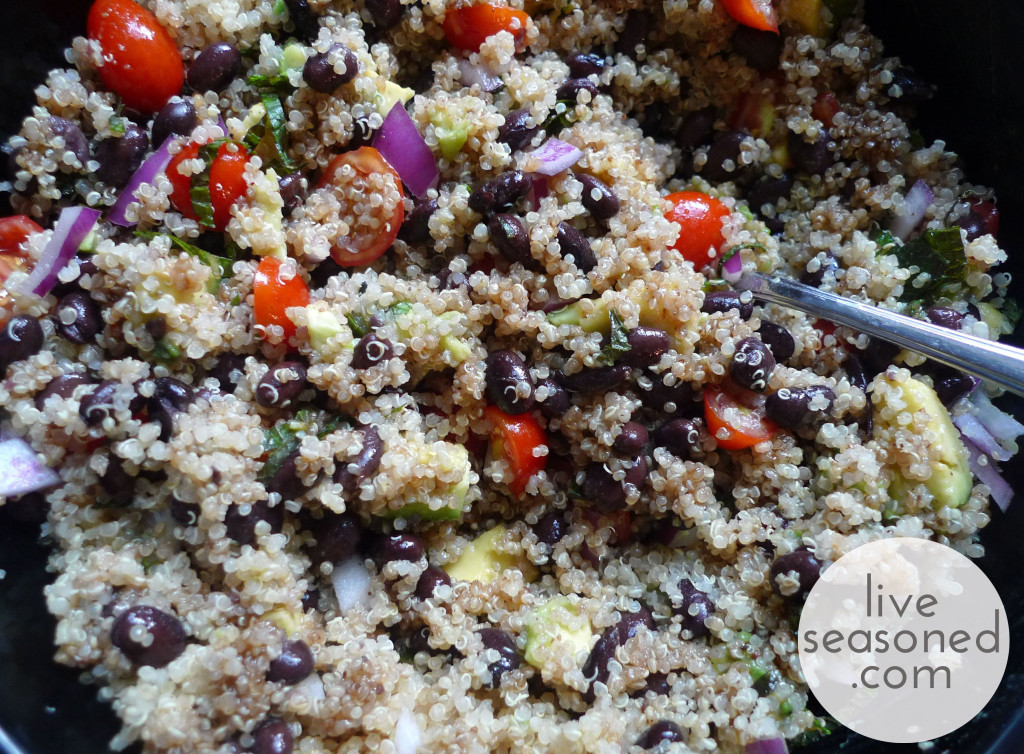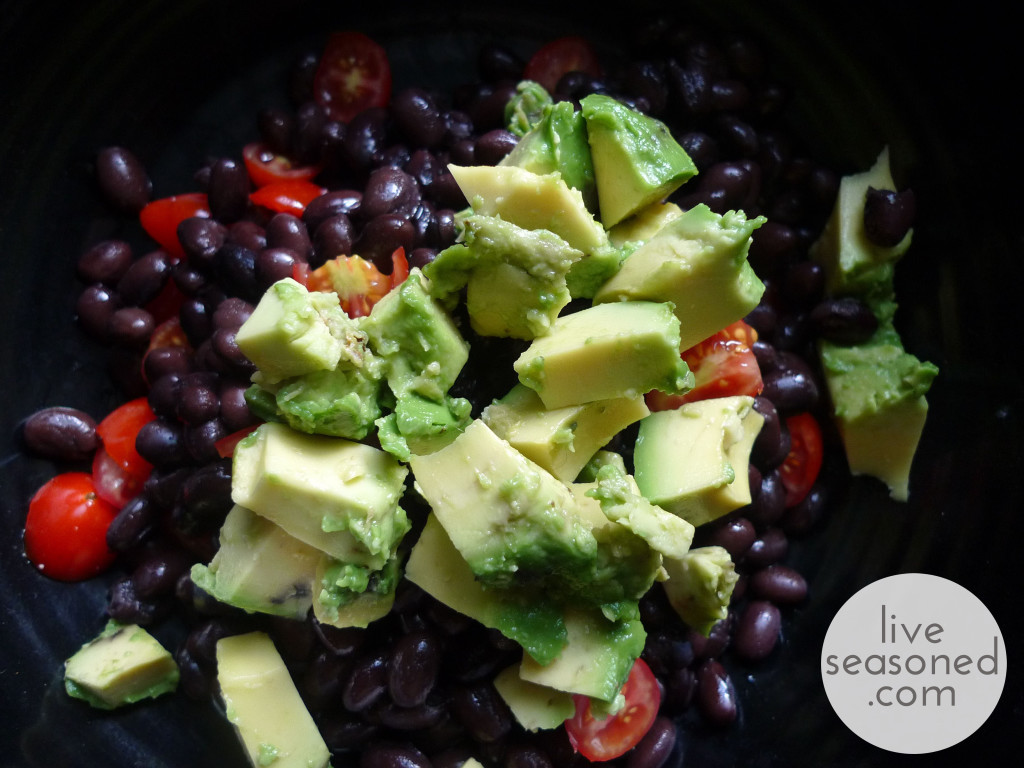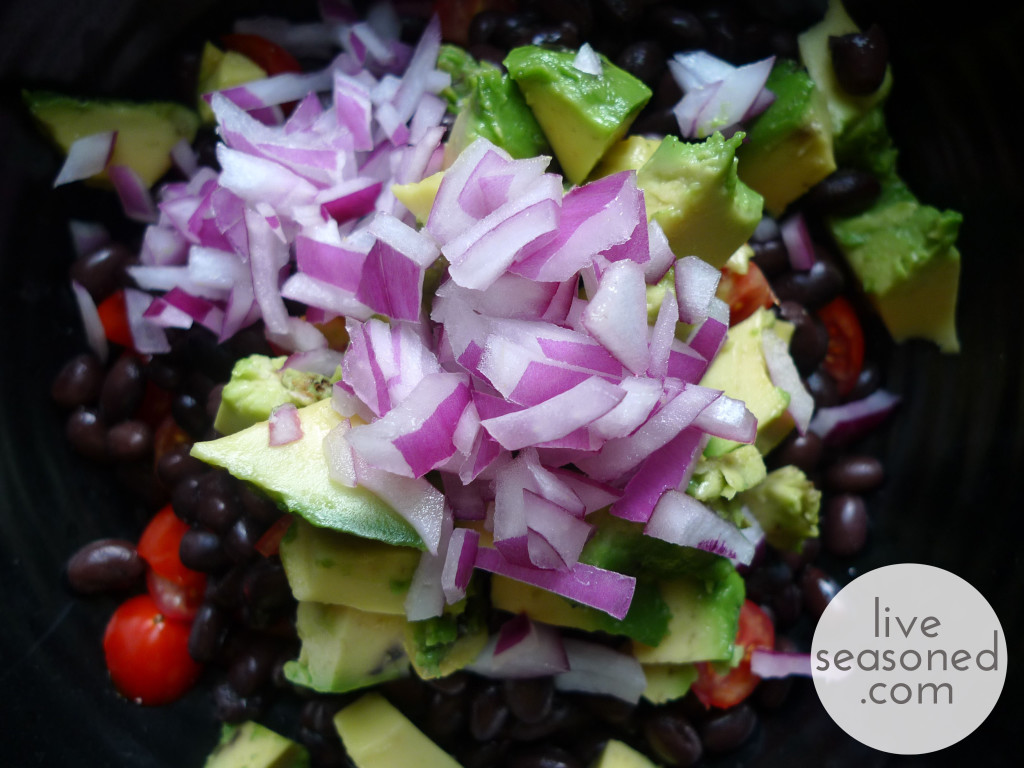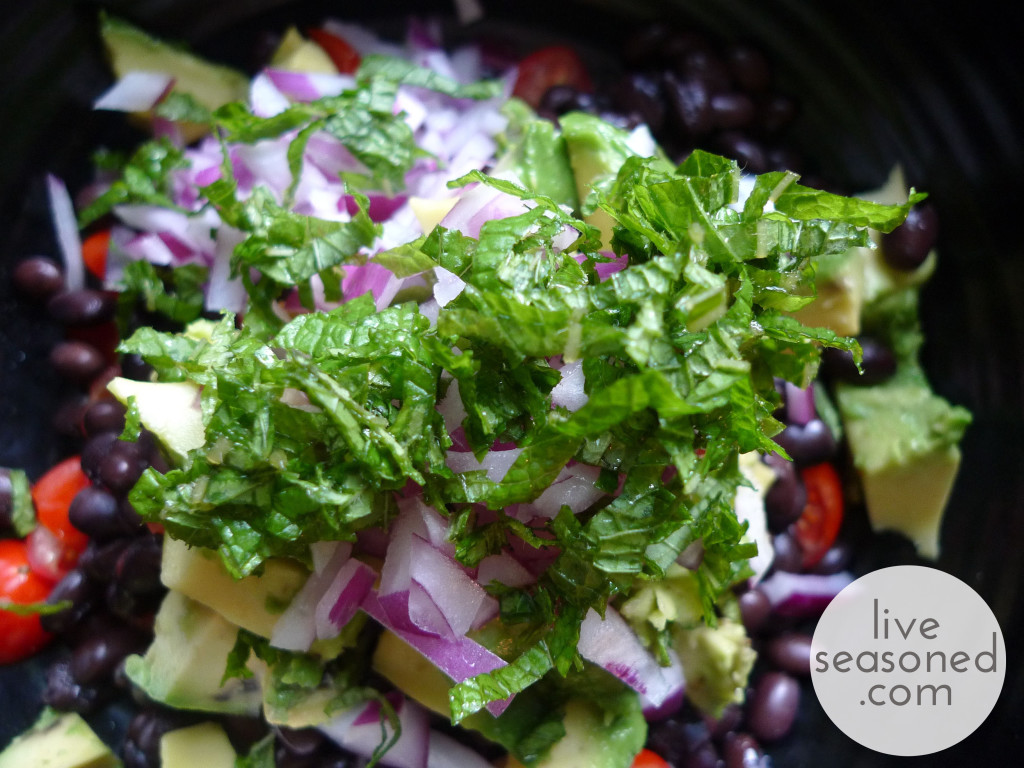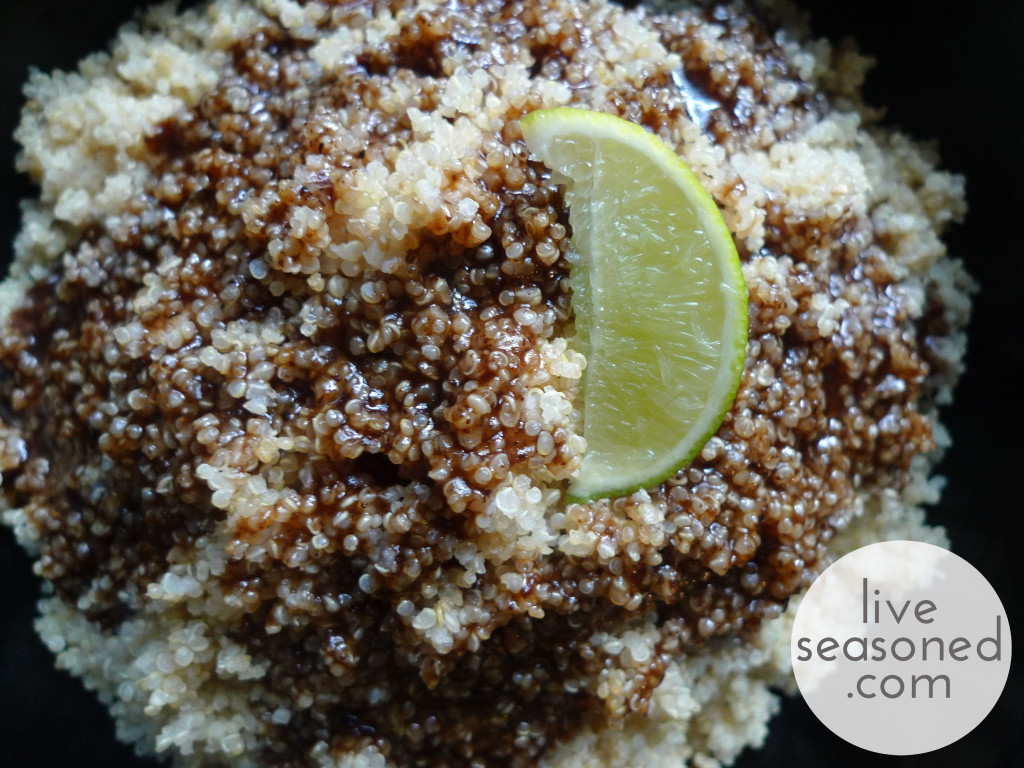Mint is our ingredient of the season. So far we’ve shared a few mojitos, perfect for sipping while using our minted foot scrub.
Have you tried quinoa yet? It’s an uber nutritious grain, or psuedo-cereal, that’s high in protein, fiber, and minerals. Quinoa is native to the Andes, and that’s still where most of the world’s crop is grown, but with its increasing popularity over the past decade or so, it’s easy to find in most markets across the US. If you haven’t tried it before, don’t be deterred. Cooking quinoa is as simple as boiling water, and then you can eat it warm and lightly seasoned in place of rice or couscous as a side to meat and veggie dishes. Beyond side-dish status, we love to throw quinoa (warm or cold) into salads. It’s a fantastically simple use that quickly ups the salad’s nutritional content and can turn it into a hearty meal (and we aren’t the only ones singing the quinoa salad’s praises).
That said, adding an ingredient to a salad does not necessarily require its own post. But we know that everyone can get into salad ruts, so we love to share a good ingredient combination when we come upon one, especially when it includes our ingredient of the season! With the lime, black beans, and avocado, this salad has a southwest feel and would be the perfect side to your next Tex-Mex dish. Along those lines, I add cumin, a popular Tex-Mex spice to the dressing. I love the combination of cumin and black beans, but if it’s not you’re thing you can easily skip that ingredient.
Black Bean & Mint Quinoa Salad
Easily feeds four as a side salad and at least two as a main dish.
Salad
- 1 cup quinoa (uncooked and rinsed)
- 2 cups water
- one can of black beans
- one ripe avocado
- 1/2 cup diced tomatos
- 1/4 cup diced purple onions
- 1/4 cup chopped mint
Dressing
- 1/4 cup balsamic vinegar
- 3/4 cup olive oil
- 1 Tbsp dijon mustard
- 1 tsp sugar (I like to use brown!)
- 1/4 tsp salt
- 1/2 tsp cumin
- juice from half a lime
Putting it Together
- Cook the quinoa. Place the rinsed quinoa and water in a sauce pot. Bring it to a boil and then reduce to a low simmer and cover for about 15 minutes (until all of the water has evaporated). After it is done cooking, remove your pot from the heat and fluff the quinoa with a fork.
- Mix the dressing. I simply place all of my dressing ingredients in a jar with a tight fitting lid and give it a good shake until well blended. You can also place the ingredients in a bowl and whisk to blend. The dressing will likely make more than you need.
- Make the salad. This is as simple as placing all of the ingredients in a bowl and stirring it up, but I have a suggestion ~ let the quinoa carry your dressing through the salad. With this method you’ll rarely end up with a pool of dressing in the bottom of your bowl that you have to remix. Place all of the vegetables in the bowl first and finish when the warm quinoa, then pour the dressing** over the quinoa and let it soak in slightly before mixing up the salad. The warm quinoa seems to absorb dressing better than cold, but of course I’ll use cold in a pinch!
- **Just a reminder that you may want to use less than the full quantity of dressing.
Additional Notes
- The salad stores and travels well, making it a great choice for picnics or a healthy packed lunch.
- I often add greens to my salad and think they would be a great compliment here. That said, adding greens changes the storage/packing quality for some, and so you may want to keep them on the side until you’re ready to serve.
- If there are no vegans in the house, I like to add a crumbly cheese. My mom picked up some queso fresco, and it’s quickly becoming my favorite choice for salads like this.
- I’m lazy when it comes to rinsing my grains, but quinoa develops a bitter outer layer as it matures. It’s believed that this layer helps to deter birds from feeding on the grain. Quinoa is processed to remove that layer, but remnants may remain, and so it is best to give the grains a final rinse to remove any bitter residue.
- If this is your first time cooking quinoa, be aware that the grain’s germ separates while cooking. You will see it as a bunch of white little strings (others say worms) mixed in with the grain. Just know that nothing is wrong with your batch!

